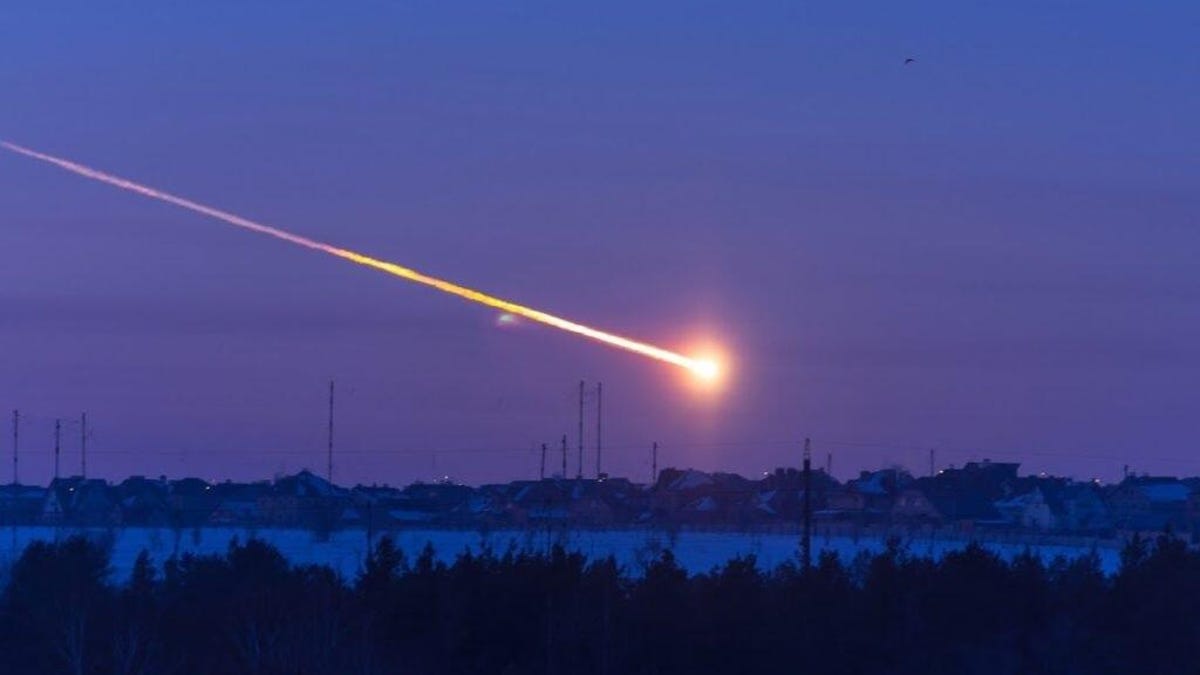NASA says it was a meteor that shook the ground on New Year's Day
A bolide broke up over Pennsylvania, releasing a blast equivalent to 30 tons of TNT.

The bolide over Russia in 2013. Observers in Pennsylvania may have seen something smaller but similar on New Year's Day had it not been cloudy.
In the late morning hours of New Year's Day, residents of suburban Pittsburgh were gently rocked into 2022 by a loud noise that rattled and shook homes. NASA now confirms the mysterious boom wasn't belated revelry but a bolide breaking up in the atmosphere above.
"Had it not been cloudy, the fireball would have been easily visible in the daylight sky," the space agency wrote on its Meteor Watch Facebook page Sunday night. "Crude estimate indicates about 100 times the brightness of the full moon."
The boom puzzled many on the ground in Pittsburgh, as there was no record of seismic activity, thunder or lightning at the time. However, NASA's GOES-16 weather satellite did pick up a "strong meteor signature" that was later verified.
NASA says sensors on the ground picked up the blast wave from the meteor breaking apart as it traveled through the atmosphere, facing extreme heat and friction along the way. It's estimated the space rock was about 3 feet (one meter) in diameter, weighing half a ton, and that the event released energy equivalent to 30 tons of TNT.
That makes this quite the baby bolide compared with the meteor that broke up over Russia in 2013, blowing out thousands of windows below. That bolide released the equivalent to 440,000 tons of TNT, according to NASA.
Due to the small size of the bolide over Pennsylvania, it's unlikely any small meteorites made it to the ground. The entire thing probably burned up in the atmosphere.

